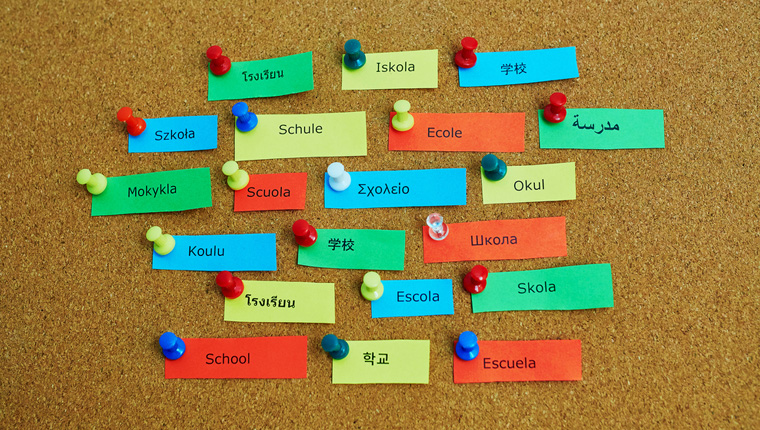5 Tips to Ensure Seamless Translation of Highly Technical eLearning Courses
eLearning translations of highly technical courses is challenging. Here are 5 tips to help ensure seamless eLearning translation of technical courses.

With organizations being demographically dispersed, eLearning has become an inevitable need for companies to cater to the learning requirements of their global employees. However, eLearning courses are traditionally developed in the English language and this has results in a knowledge gap for global learners. With language differences persisting around the globe and English not being the first language, dissemination of knowledge equally among global employees is at stake. The situation gets worse when you deal with technical courses with subject-specific terminology. eLearning translation is a tactic way to disseminate knowledge equally and consistently to global employees.
5 Tips for Seamless Translation of Technical Courses
- Choose the right translation team
- Have a kick-off meet with the reviewers
- Create a glossary of technical terms
- Create a sample prototype
- Start developing a database for TM tool
However, there is much more to eLearning translation when you approach highly technical courses that require quality control in several aspects such the terminology used. Have a look at these five tips that will ensure the seamless translation of your technical courses.
Tips for Successful eLearning Translation of Technical Courses
1. Choose the Right eLearning Translation Team
Translating a technical course requires an eLearning translation team with expertise beyond knowing multiple languages. For example, translating an eLearning course developed based on chemical research will require a translation team with domain knowledge in the subject matter and background in translating the technical jargon used in your course.
If you are planning to outsource your eLearning translation project, look for a vendor who will be able to focus on your industry and area of interest.
2. Have a Kick-off Meeting with eLearning Translation Reviewers
Once your eLearning translation team has been fixed, before sending your course for translation, have a kick-off meeting with the reviewers, who are language experts with domain knowledge. Subject matter issues that could occur during the translation, as well as other changes such as expanded text after translation, or any other technical requirements to be considered can be discussed in this kick-off meet.
Reviewers will also have to look into the current knowledge levels of the target language users. Check whether the source eLearning course – the complexity in terminology match the training requirements of the target learners.
3. Create a Glossary of Technical Terms
Glossaries are for handy reference. There will be many buzzwords and terms flying around in your industry. Definitely, these terms occur frequently in your technical eLearning courses.
eLearning translation is charged for the number of words. Thus, if you want to translate your 30-minute course into six different languages, the time and cost involved in the process will multiply. Creating a translation glossary before starting the translation project will save time and cost involved in the process.
The Process for Creating a Glossary
- Once your linguists create a glossary of the common terms used in the eLearning course, send it to your translator for translation.
- Check whether the translated glossary content matches your company-specific requirements.
- Give a final sign-off on glossary.
- Your translator can now get to work on translating the course.
This gives your eLearning translator an exact idea on how you expect your eLearning to be translated and at the end of translation, the course content will look exactly as you expected. Apart from saving translation time, glossaries help you maintain consistency in your translated digital courses.
4. Create a Sample Prototype for eLearning Translation
A pilot run of the actual translated course, prototyping, is an opportunity to weed out any flaws in your translated course. Considering the high level of technicality involved in your course, chances are still high for misconceptions and guess works on the translator’s part. Prototyping helps your reviewers identify and fix the bugs and glitches in the translated courses at an early stage. A functional prototype also brings down the ambiguity around the translation project and gives you a better picture of the final product.
5. Start Developing a Database for TM Tool
Consider you are translating an eLearning course for your pharmaceutical industry. Your course will have a multitude of topics and the translation process will require contextual knowledge and extensive research. A Translation Memory Tool (TM Tool) can free your translators from the burden of maintaining consistency and quality in the translated work.
In an eLearning course, there will be similar or identical content in the form of phrases and statements that recur throughout that course. Manually entering the same text time and time again will slow down the translation process and reduces the consistency of your work. The TM tool captures this repeated text for future re-use. When you apply a TM tool to your source file, the tool instantly extracts repeated phrases and sentences and places them in the target file. You can either accept or override the match suggestions made by the TM tool.
Isn’t it tempting to think of eLearning translation as a swift and straightforward process? However, working with highly technical courses, with industry-specific jargon and terminology can easily lead to delays and re-work if not planned efficiently. Following the above-mentioned tips will help your translation vendor translate the way you anticipate and match your translation requirements.





